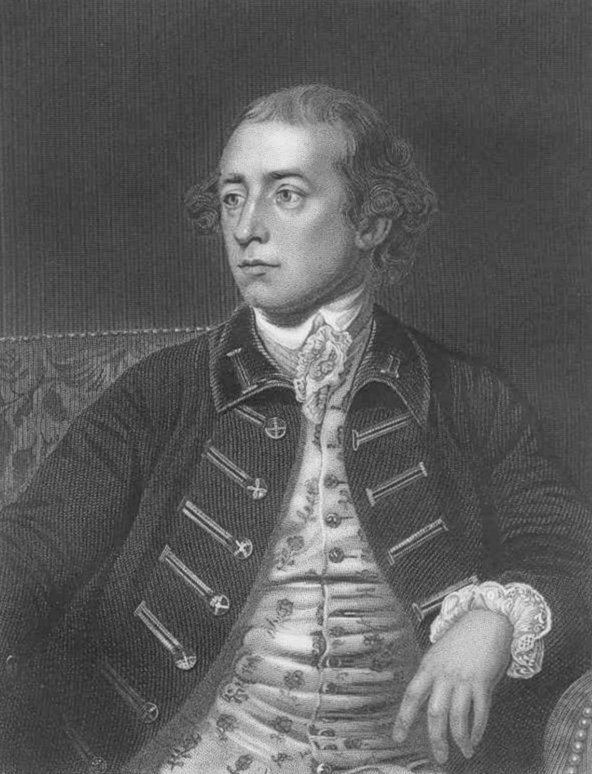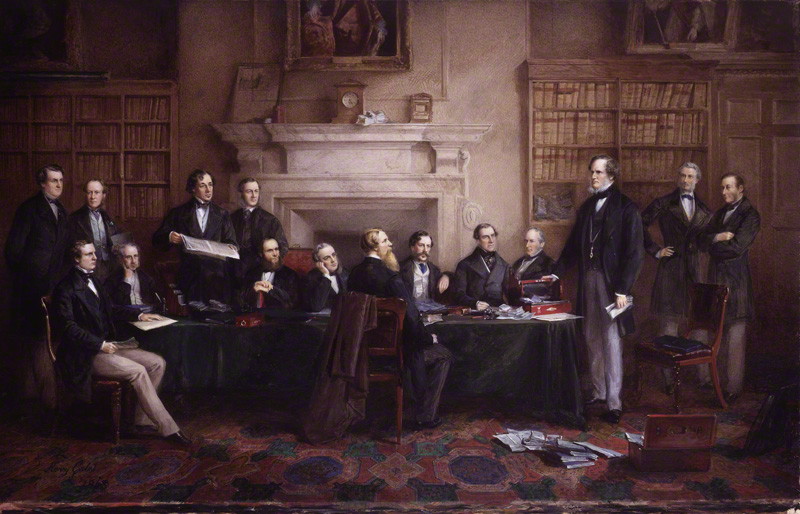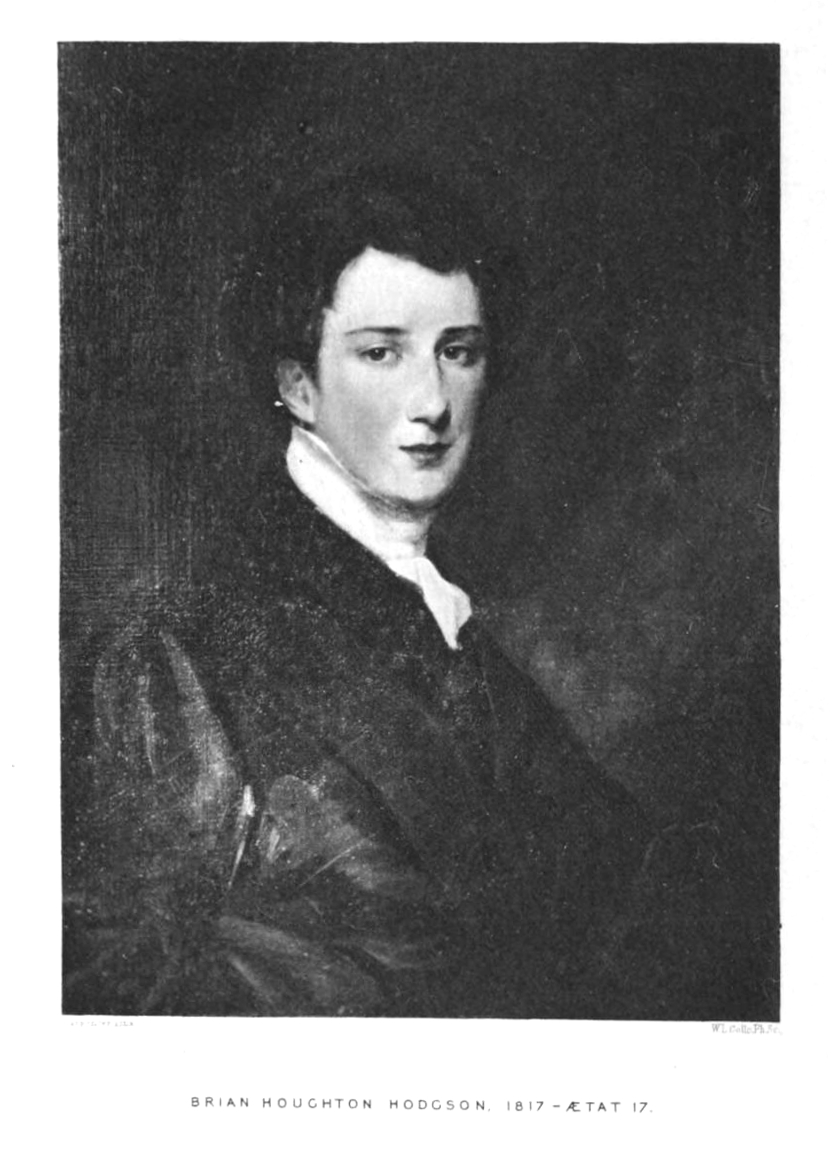|
W. W. Hunter
Sir William Wilson Hunter (15 July 18406 February 1900) was a Scottish historian, statistician, a compiler and a member of the Indian Civil Service. He is most known for ''The Imperial Gazetteer of India'' on which he started working in 1869, and which was eventually published in nine volumes in 1881, then fourteen, and later as a twenty-six volume set after his death. Early life and education William Wilson Hunter was born on 15 July 1840 in Glasgow, Scotland, to Andrew Galloway Hunter, a Glasgow manufacturer. He was the second of his father's three sons. In 1854 he started his education at the 'Quaker Seminary' at Queenswood, Hampshire, and a year later he joined The Glasgow Academy. He was educated at the University of Glasgow ( BA 1860), Paris and Bonn, acquiring a knowledge of Sanskrit, LL.D., before passing first in the final examination for the Indian Civil Service in 1862. Career He reached Bengal Presidency in November 1862 and was appointed assistant magistrate and ... [...More Info...] [...Related Items...] OR: [Wikipedia] [Google] [Baidu] |
Glasgow
Glasgow is the Cities of Scotland, most populous city in Scotland, located on the banks of the River Clyde in Strathclyde, west central Scotland. It is the List of cities in the United Kingdom, third-most-populous city in the United Kingdom and the 27th-most-populous city in Europe, and comprises Wards of Glasgow, 23 wards which represent the areas of the city within Glasgow City Council. Glasgow is a leading city in Scotland for finance, shopping, industry, culture and fashion, and was commonly referred to as the "second city of the British Empire" for much of the Victorian era, Victorian and Edwardian eras. In , it had an estimated population as a defined locality of . More than 1,000,000 people live in the Greater Glasgow contiguous urban area, while the wider Glasgow City Region is home to more than 1,800,000 people (its defined functional urban area total was almost the same in 2020), around a third of Scotland's population. The city has a population density of 3,562 p ... [...More Info...] [...Related Items...] OR: [Wikipedia] [Google] [Baidu] |
Sanskrit
Sanskrit (; stem form ; nominal singular , ,) is a classical language belonging to the Indo-Aryan languages, Indo-Aryan branch of the Indo-European languages. It arose in northwest South Asia after its predecessor languages had Trans-cultural diffusion, diffused there from the northwest in the late Bronze Age#South Asia, Bronze Age. Sanskrit is the sacred language of Hinduism, the language of classical Hindu philosophy, and of historical texts of Buddhism and Jainism. It was a lingua franca, link language in ancient and medieval South Asia, and upon transmission of Hindu and Buddhist culture to Southeast Asia, East Asia and Central Asia in the early medieval era, it became a language of religion and high culture, and of the political elites in some of these regions. As a result, Sanskrit had a lasting effect on the languages of South Asia, Southeast Asia and East Asia, especially in their formal and learned vocabularies. Sanskrit generally connotes several Indo-Aryan languages# ... [...More Info...] [...Related Items...] OR: [Wikipedia] [Google] [Baidu] |
Bijdragen Tot De Taal-, Land- En Volkenkunde
''Bijdragen tot de Taal-, Land- en Volkenkunde'' (English title: ''Journal of the Humanities and Social Sciences of Southeast Asia and Oceania'') also known by the abbreviated name BKI (Bijdragen Koninklijk Instituut), is a peer reviewed academic journal on Southeast Asia and Indonesia that was established in 1853 and was published by the Royal Netherlands Institute of Southeast Asian and Caribbean Studies. It was published as ''Bijdragen tot de taal-, land- en volkenkunde van Nederlandsch-Indië'' () between 1853 and 1948. The journal focuses in particular on linguistics, anthropology, and history of Southeast Asia, and more specifically of Indonesia. It appears quarterly, running a total of roughly 600 pages annually. The editor-in-chief An editor-in-chief (EIC), also known as lead editor or chief editor, is a publication's editorial leader who has final responsibility for its operations and policies. The editor-in-chief heads all departments of the organization and is held acco ... [...More Info...] [...Related Items...] OR: [Wikipedia] [Google] [Baidu] |
Description De L'Égypte
The ''Description de l'Égypte'' (, ''"Description of Egypt"'') was a series of publications, appearing first in 1809 and continuing until the final volume appeared in 1829, which aimed to comprehensively catalog all known aspects of ancient and modern Egypt as well as its natural history. It is the collaborative work of about 160 civilian scholars and scientists, known popularly as the savants, who accompanied Bonaparte's expedition to Egypt in 1798 to 1801 as part of the French Revolutionary Wars, as well as about 2000 artists and technicians, including 400 engravers, who would later compile it into a full work. At the time of its publication, it was the largest known published work in the world. The full title of the work is ''Description de l'Égypte, ou Recueil des observations et des recherches qui ont été faites en Égypte pendant l'expédition de l'armée française, publié par les orders de Sa Majesté l'Empereur Napoléon le Grand'' (English: ''Description of Egyp ... [...More Info...] [...Related Items...] OR: [Wikipedia] [Google] [Baidu] |
Ain-i-Akbari
The ''Ain-i-Akbari'' (), or the "Administration of Akbar", is a 16th-century detailed document regarding the administration of the Mughal Empire under Emperor Akbar, written by his court historian, Abu'l Fazl, in the Persian language. It forms Volume III and the final part of the much larger document, the '' Akbarnama'' (''Account of Akbar''), also by Abu'l-Fazl, and is itself in three volumes. Contents The ''Ain-i-Akbari'' is the third volume of the ''Akbarnama'' containing information on Akbar's reign in the form of administrative reports, similar to a gazetteer. In Blochmann's explanation, "it contains the 'āīn' (i.e. mode of governing) of Emperor Akbar, and is the administrative report and statistical return of his government as it was about 1590."Blochmann, H. (tr.) (1927, reprint 1993). ''The Ain-I Akbari by Abu'l-Fazl Allami'', Vol. I, Calcutta: The Asiatic Society, preface (first edition) The ''Ain-i-Akbari'' is divided into five books. The first book called manzil- ... [...More Info...] [...Related Items...] OR: [Wikipedia] [Google] [Baidu] |
Francis Buchanan-Hamilton
Francis Buchanan (15 February 1762 – 15 June 1829), later known as Francis Hamilton but often referred to as Francis Buchanan-Hamilton, was a Scottish surgeon, surveyor and botanist who made significant contributions as a geographer and zoologist while living in India. He did not assume the name of Hamilton until three years after his retirement from India. The standard botanical author abbreviation Buch.-Ham. is applied to plants and animals he described, though today the form "Hamilton, 1822" is more usually seen in ichthyology and is preferred by Fishbase. Early life Francis Buchanan was born at Bardowie, Callander, Perthshire where Elizabeth, his mother, lived on the estate of Branziet; his father Thomas, a physician, came in Stirling, Spittal and claimed the chiefdom of the name of Clan Buchanan, Buchanan and owned the Leny estate. Francis Buchanan matriculated in 1774 and received an MA in 1779. As he had three older brothers, he had to earn a living from a profession, ... [...More Info...] [...Related Items...] OR: [Wikipedia] [Google] [Baidu] |
Governor-General Of India
The governor-general of India (1833 to 1950, from 1858 to 1947 the viceroy and governor-general of India, commonly shortened to viceroy of India) was the representative of the monarch of the United Kingdom in their capacity as the emperor or empress of India and after Indian independence in 1947, the representative of the monarch of India. The office was created in 1773, with the title of governor-general of the Presidency of Fort William. The officer had direct control only over his presidency but supervised other East India Company officials in India. Complete authority over all of British territory in the Indian subcontinent was granted in 1833, and the official came to be known as the governor-general of India. In 1858, because of the Indian Rebellion the previous year, the territories and assets of the East India Company came under the direct control of the British Crown; as a consequence, company rule in India was succeeded by the British Raj. The governor-general ( ... [...More Info...] [...Related Items...] OR: [Wikipedia] [Google] [Baidu] |
Richard Southwell Bourke, 6th Earl Of Mayo
Richard Southwell Bourke, 6th Earl of Mayo, (; ; 21 February 1822 – 8 February 1872) styled Lord Naas (; ) from 1842 to 1867 and Lord Mayo in India, was a prominent British statesman and Conservative politician. He served as Chief Secretary for Ireland (1852, 1858–9, 1866–8) and was Viceroy of India from 1869 until his assassination in 1872. Background and education Mayo was born in Dublin, Ireland, the eldest son of Robert Bourke, 5th Earl of Mayo (the son of Hon. Richard Burke, Bishop of Waterford and Lismore), and his wife, Anne Charlotte, daughter of the Hon. John Jocelyn. His younger brother the Hon. Robert Bourke was also a successful politician. He was educated at Trinity College, Dublin (attaining BA in 1844, MA in 1851, and LLD in 1852). He and his brothers were accomplished horsemen and enjoyed fox hunting. Political career After travelling in Russia, detailed in his ''St. Petersburg and Moscow'' (1846), Mayo was elected MP for Kildare (1847–52), ... [...More Info...] [...Related Items...] OR: [Wikipedia] [Google] [Baidu] |
Encyclopædia Britannica Eleventh Edition
The ''Encyclopædia Britannica'' Eleventh Edition (1910–1911) is a 29-volume reference work, an edition of the ''Encyclopædia Britannica''. It was developed during the encyclopaedia's transition from a British to an American publication. Some of its articles were written by the best-known scholars of the time. This edition of the encyclopaedia, containing 40,000 entries, has entered the public domain and is readily available on the Internet. Its use in modern scholarship and as a reliable source has been deemed problematic due to the outdated nature of some of its content. Nevertheless, the 11th edition has retained considerable value as a time capsule of scientific and historical information, as well as scholarly attitudes of the era immediately preceding World War I. Background The 1911 eleventh edition was assembled with the management of American publisher Horace Everett Hooper. Hugh Chisholm, who had edited the previous edition, was appointed editor-in-chief, with ... [...More Info...] [...Related Items...] OR: [Wikipedia] [Google] [Baidu] |
Brian Houghton Hodgson
Brian Houghton Hodgson (1 February 1801 – 23 May 1894) was a pioneer natural history, naturalist and ethnologist working in India and Nepal where he was a British Resident (title), Resident. He described numerous species of birds and mammals from the Himalayas, and several birds were named after him by others such as Edward Blyth. He was a scholar of Newar Buddhism and wrote extensively on a range of topics relating to linguistics and religion. He was an opponent of the British proposal to introduce English as the official medium of instruction in Indian schools. Early life Hodgson was the second of seven children of Brian Hodgson (1766–1858) and his wife Catherine (1776–1851), and was born at Lower Beech, Prestbury, Cheshire. His father lost money in a bad bank investment and had to sell their home at Lower Beech. A great-aunt married to Beilby Porteus, the Bishop of London, helped them but the financial difficulties were great. Hodgson's father worked as a warden of the M ... [...More Info...] [...Related Items...] OR: [Wikipedia] [Google] [Baidu] |
Bankim Chandra Chattopadhyay
Bankim Chandra Chattopadhyay (anglicized as Bankim Chandra Chatterjee; 26 or 27 June 1838 – 8 April 1894) was an Indian Bengali novelist, poet, essayist and journalist.Staff writer"Bankim Chandra: The First Prominent Bengali Novelist" ''The Daily Star'', 30 June 2011 He was the author of the 1882 Bengali language novel '' Anandamath'', which is one of the landmarks of modern Bengali and Indian literature. He was the composer of ''Vande Mataram'', written in highly Sanskritised Bengali, personifying India as a mother goddess and inspiring activists during the Indian Independence Movement. Chattopadhayay wrote fourteen novels and many serious, serio-comic, satirical, scientific and critical treatises in Bengali. He is known as ''Sahitya Samrat'' (Emperor of Literature) in Bengali. Biography Chattopadhayay is widely regarded as a key figure in literary renaissance of Bengal as well as the broader Indian subcontinent. Some of his writings, including novels, essays and comm ... [...More Info...] [...Related Items...] OR: [Wikipedia] [Google] [Baidu] |
Historical Romance
Historical romance is a broad category of mass-market fiction focusing on romantic relationships in historical periods, which Lord Byron, Byron helped popularize in the early 19th century. The genre often takes the form of the novel. Varieties Viking Vikings, Viking books feature warriors during the Dark Ages (historiography), Dark Ages or Middle Ages. Heroes in Viking romances are stereotypically masculine men who are later "tamed" by their heroines. Most heroes are described as "tall, blonde, and strikingly handsome." Using the Viking culture allows novels set in these time periods to include some travel, as the Vikings were "adventurers, founding and conquering colonies all over the globe." In a 1997 poll of over 200 readers of Viking romances, Johanna Lindsey's ''Fires of Winter'' was considered the best of the subgenre. The subgenre has fallen out of style, and few novels in this vein have been published since the mid-1990s. Medieval Medieval romances are typically set b ... [...More Info...] [...Related Items...] OR: [Wikipedia] [Google] [Baidu] |







